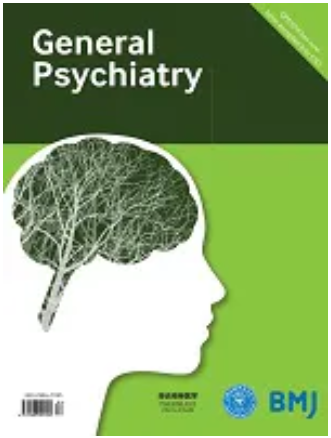Exploring the influences of education, intelligence and income on mental disorders
IF 5.3
3区 医学
Q1 PSYCHIATRY
引用次数: 0
Abstract
Background Previous studies have shown that educational attainment (EA), intelligence and income are key factors associated with mental disorders. However, the direct effects of each factor on major mental disorders are unclear. Aims We aimed to evaluate the overall and independent causal effects of the three psychosocial factors on common mental disorders. Methods Using genome-wide association study summary datasets, we performed Mendelian randomisation (MR) and multivariable MR (MVMR) analyses to assess potential associations between the 3 factors (EA, N=766 345; household income, N=392 422; intelligence, N=146 808) and 13 common mental disorders, with sample sizes ranging from 9907 to 807 553. Inverse-variance weighting was employed as the main method in the MR analysis. Results Our MR analysis showed that (1) higher EA was a protective factor for eight mental disorders but contributed to anorexia nervosa, obsessive-compulsive disorder (OCD), bipolar disorder (BD) and autism spectrum disorder (ASD); (2) higher intelligence was a protective factor for five mental disorders but a risk factor for OCD and ASD; (3) higher household income protected against 10 mental disorders but confers risk for anorexia nervosa. Our MVMR analysis showed that (1) higher EA was a direct protective factor for attention-deficit/hyperactivity disorder (ADHD) and insomnia but a direct risk factor for schizophrenia, BD and ASD; (2) higher intelligence was a direct protective factor for schizophrenia but a direct risk factor for major depressive disorder (MDD) and ASD; (3) higher income was a direct protective factor for seven mental disorders, including schizophrenia, BD, MDD, ASD, post-traumatic stress disorder, ADHD and anxiety disorder. Conclusions Our study reveals that education, intelligence and income intertwine with each other. For each factor, its independent effects on mental disorders present a more complex picture than its overall effects. No data are available.探讨教育、智力和收入对精神障碍的影响
背景 以往的研究表明,教育程度(EA)、智力和收入是与精神障碍相关的关键因素。然而,各因素对主要精神障碍的直接影响尚不明确。目的 我们旨在评估这三个社会心理因素对常见精神障碍的整体和独立因果效应。方法 我们利用全基因组关联研究汇总数据集,进行了孟德尔随机化(MR)和多变量 MR(MVMR)分析,以评估这三个因素(EA,766 345 人;家庭收入,392 422 人;智力,146 808 人)与 13 种常见精神障碍之间的潜在关联,样本量从 9907 个到 807 553 个不等。MR 分析主要采用反方差加权法。结果 我们的磁共振分析表明:(1) 较高的 EA 是 8 种精神障碍的保护因素,但会导致神经性厌食症、强迫症、双相情感障碍和自闭症谱系障碍;(2) 较高的智力是 5 种精神障碍的保护因素,但会成为强迫症和自闭症谱系障碍的风险因素;(3) 较高的家庭收入可预防 10 种精神障碍,但会带来神经性厌食症的风险。我们的 MVMR 分析表明:(1) 较高的 EA 是注意力缺陷/多动障碍(ADHD)和失眠症的直接保护因素,但却是精神分裂症、BD 和 ASD 的直接风险因素;(2) 较高的智力是精神分裂症的直接保护因素,但却是重度抑郁障碍(MDD)和 ASD 的直接风险因素;(3) 较高的收入是精神分裂症、BD、MDD、ASD、创伤后应激障碍、ADHD 和焦虑症等七种精神障碍的直接保护因素。结论 我们的研究表明,教育、智力和收入相互交织。就每个因素而言,其对精神障碍的独立影响比其总体影响更复杂。暂无数据。
本文章由计算机程序翻译,如有差异,请以英文原文为准。
求助全文
约1分钟内获得全文
求助全文
来源期刊

General Psychiatry
医学-精神病学
CiteScore
21.90
自引率
2.50%
发文量
848
期刊介绍:
General Psychiatry (GPSYCH), an open-access journal established in 1959, has been a pioneer in disseminating leading psychiatry research. Addressing a global audience of psychiatrists and mental health professionals, the journal covers diverse topics and publishes original research, systematic reviews, meta-analyses, forums on topical issues, case reports, research methods in psychiatry, and a distinctive section on 'Biostatistics in Psychiatry'. The scope includes original articles on basic research, clinical research, community-based studies, and ecological studies, encompassing a broad spectrum of psychiatric interests.
 求助内容:
求助内容: 应助结果提醒方式:
应助结果提醒方式:


